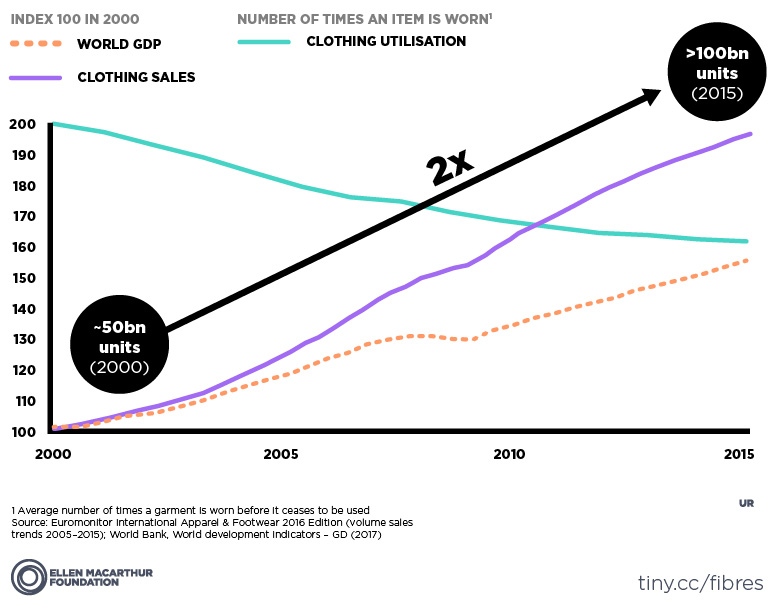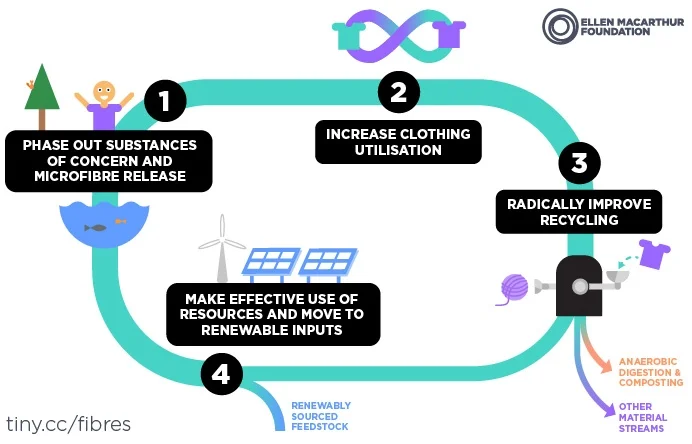Eye: Stella McCartney Joins Forces With Ellen MacArthur Foundation In Global Fashion Impact On Environment Study
/Stella McCartney & Ellen McArthur
The fashion industry turns towards London for Monday night's The Fashion Awards 2017 in partnership with Swarovski. To build excitement, several honorees have been announced in advance.
Stella McCartney Environmental Fashion Warrior
Designer Stella McCartney will be honored with a Special Recognition Award for Innovation, reflecting her commitment to innovation and for utilizing her influence to promote environmental responsibility.
Stella will use her platform to back the Ellen MacArthur foundation campaign to stop the global fashion industry consuming a quarter of the world's annual carbon budget by 2050.
In a report published this week, round-the-world sailor and environmental campaigner Dame Ellen MacArthur exposes the vast scale of waste, and how the throwaway nature of fashion has propelled the fashion industry into a new reality of creating greenhouse emission of 1.2 billion tons a year -- larger than the combined total of international flights and shipping combined.
Other important factoids in the report reveal that:
* less than 1% of material used to make clothing is recycled into new clothing;
* the average number of times a garment is worn before it ceases to be used has decreased by 36% in 15 years;
* half of fast fashion production is disposed of in under a year; and one garbage truck full of textiles is landfilled or burnt every second;
* half a million tons of plastic microfibers are released per year from washed clothes -- 16 times more than plastic microbeads from cosmetics -- making clothes a major contributor of ocean pollution and ultimately ending up in the food chain. "In other words, we may end up eating our own clothes."
Putting the problem in more understandable terms, washing fleeces damages the world's oceans MORE than plastic bottles. The microfibers are so small that they pass easily through water filtration systems, moving into local waterways. A 2011 report by ecologist Mark Browne estimated that around one-third of the food we eat is contaminated by these tiny particles.
A New Circular Model For Fashion & Textile Industries
“Today’s textile industry is built on an outdated linear, take-make-dispose model and is hugely wasteful and polluting,” said MacArthur. “We need a new textile economy in which clothes are designed differently, worn longer, and recycled and reused much more often.”
MacArthur, who gained the support of industry leaders including the C&A Foundation, H&M, and Nike for her report, is calling for a circular textile economy to be created to make fashion more sustainable.
The report, supported by industry leaders including the C&A Foundation, H&M, and Nike, calls for four actions to be taken: to phase out substances of concern and microfibre release; increase clothing utilisation, for example by the industry supporting and promoting short-term clothing rental businesses; to radically improve recycling; and to move to renewable materials.
The staggering impact of fast fashion on the environment cannot be denied. More than half of 'fast' fashion produced is disposed of in less than a year, with the US being the biggest offender. In America, clothes are only worn for about a quarter of the global average. A similar pattern is emerging in China, where clothing utilization has decreased by 70% over the last 15 years.
The report further documents: "
“The textiles industry relies mostly on non-renewable resources – 98m tonnes in total per year – including oil to produce synthetic fibres, fertilisers to grow cotton, and chemicals to produce, dye, and finish fibres and textiles.
“Textiles production (including cotton farming) also uses around 93bn cubic metres of water annually, contributing to problems in some water-scarce regions.
“With its low rates of utilization … and low levels of recycling, the current wasteful, linear system is the root cause of this massive and ever expanding pressure on resources.”
Clothing production has nearly doubled in the last 15 years, according to the report, propelled by emerging markets in Asia and Africa. If the current utilization trajectory is maintained, humans will consume more than three times today's amount in 2050.
The BBC Reports a new survey by Kantar Futures in which 80% of respondents say they would pay more for products that lasted longer. The reality of fast fashion -- at least in America -- is that apparel is thrown away long before it is falling apart. The pursuit of something always new is fundamental to today's fashion cycle, led by cheap prices. Stagnant wages further contribute to consumers seeking cheap prices for stylish clothes.
Bringing the reports' findings home to America, Phoenix mayor Greg Stanton said that his city is attempting to create a circular economy out of textile waste: “Each year more than 18,000 tons of textiles find their way into … waste and recycling streams. Our city is working on creative solutions to redirect textiles from the waste stream … as a valuable resource, to ultimately stimulate the local economy.”
In 2013, Stanton and the city of Phoenix set a new goal to improve the city's current waste diversion (recycling) rate of 20 percent to 40 percent by 2020.










